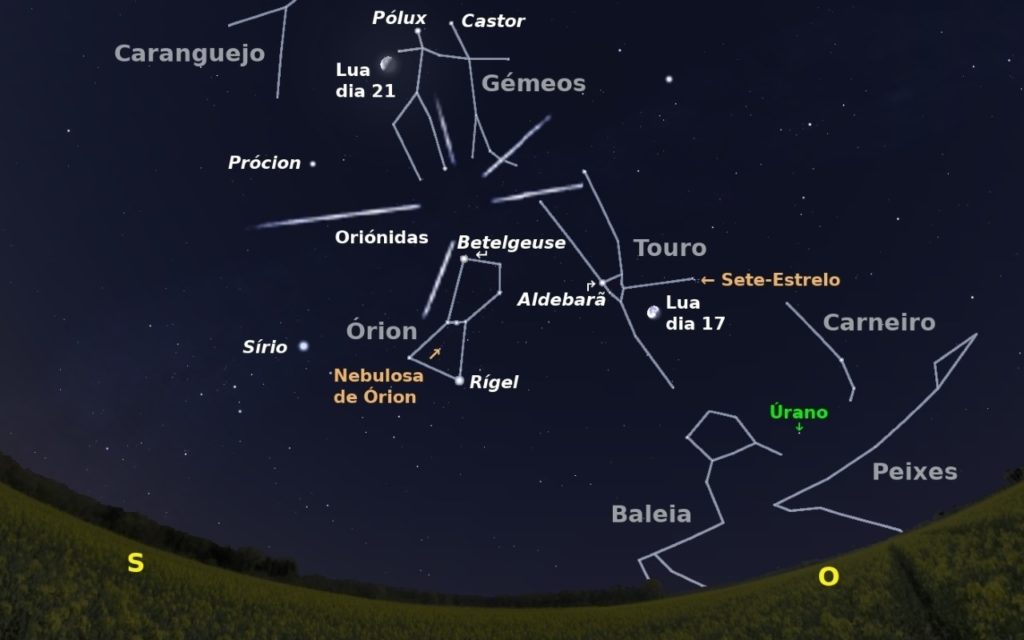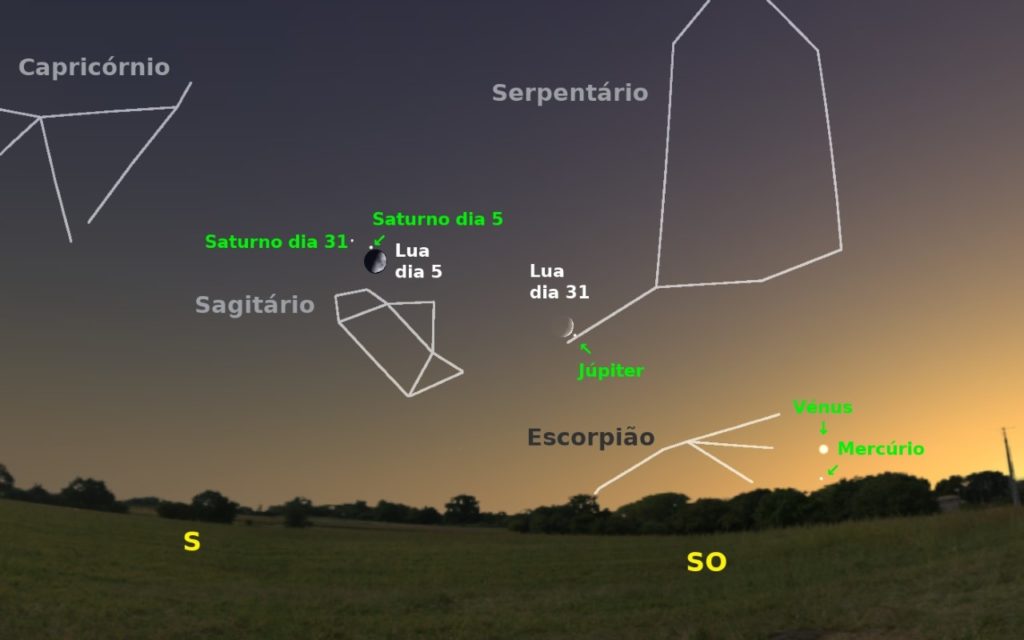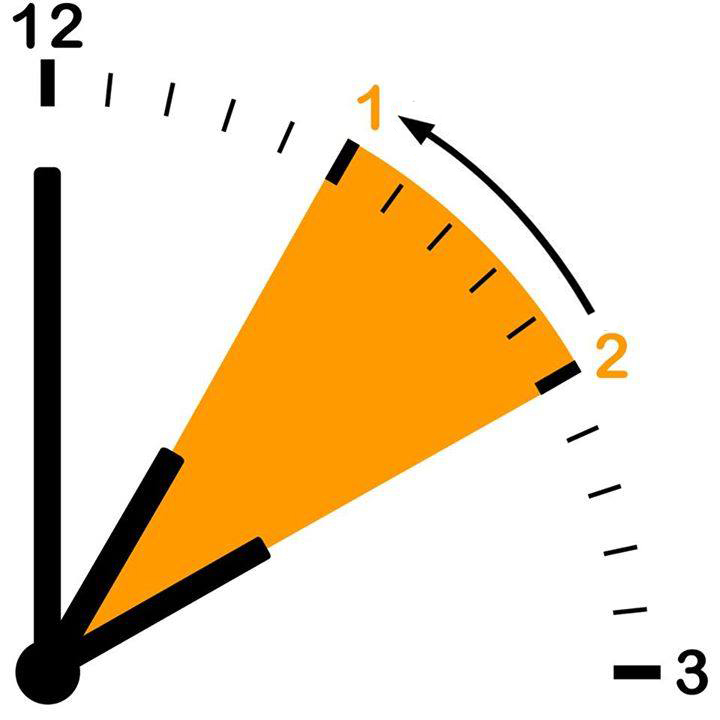This month of astronomical events is marked by the passage of the Moon with Jupiter: first on the night of the 3rd and then on the 31st. On the 27th, the winter time begins.
During the crescent of day 5 the Moon will pass so close to Saturn that along a band that goes from Chile and Argentina to the south of Southern Africa, you will see this planet hidden by the Moon.
Day 8 will be the peak of the rain of Draconid stars, which seem to radiate from a point in the sky (the radiant one) situated to the side of the head of the constellation Dragon. This meteor shower is quite weak, not exceeding ten meteors per hour even under ideal conditions.
The fourth crescent will take place on the night of the 13th between the Whale and Pisces constellations. Four nights later, the Moon will have moved to Aldebarã, the Eye of the constellation of Taurus.
The planet Mars will only reappear in the morning skies during the third week of the month, appearing alongside the constellation Virgo.
Day 20 Mercury will reach its furthest point eastwards from the Sun, making it an excellent opportunity to observe it at dusk.
On the 21st, the waning quarter takes place. At dawn on that day the Moon will have passed close to Pollux, the star that represents one of the heads of the Gemini constellation. Beaver is the star of the other twin's head. In Greco-Roman mythology the twins Pollux and Castor are children of the same mother: Leda, queen of Sparta, but of different parents. Castor was the son of Tíndar, husband of Leda, while Pollux was the son of the god Zeus.

On the night of the 21st to the 22nd there is a peak of activity from the rain of Orionids stars, small rocks and dust released by the Halley comet. The level of activity of this meteor shower depends on factors such as the phase of the moon or the time that has elapsed since the comet's last pass. This year you can expect no more than one to two dozen meteors per hour.
The 27th will be the last Sunday of the month. Thus, according to the legislation in force, at two o'clock in the morning (continental time) on that day, the winter time starts. For this reason we must set our clocks back sixty minutes. The change in time may not have a big impact on countries located at high latitudes where days and nights are not too short or long. However, at our latitude, this measure allows us to make better use of the hours of sun exposure.
On the 28th, New Moon takes place. At this same time Uranus will be in position, ie the position diametrically opposite to the sun, and so at the time when this planet is closest to Earth and with its face towards us fully illuminated. This planet will be located next to the constellations of the Aries and the Pisces, right on the threshold of what is observable to the naked eye in places with very little light pollution.
On the 29th the Moon will pass at the foot of Venus and two days after Mercury. These two planets will be visible throughout the month as evening stars, the closest approximation between the two being around the 30th. These planets will be said to be in conjunction. Such a phenomenon has no impact on our lives other than giving us another nice excuse to look at the sky.
Good remarks!

Fernando JG Pinheiro (CITEUC)
Science in the Regional Press – Ciência Viva



















Comments